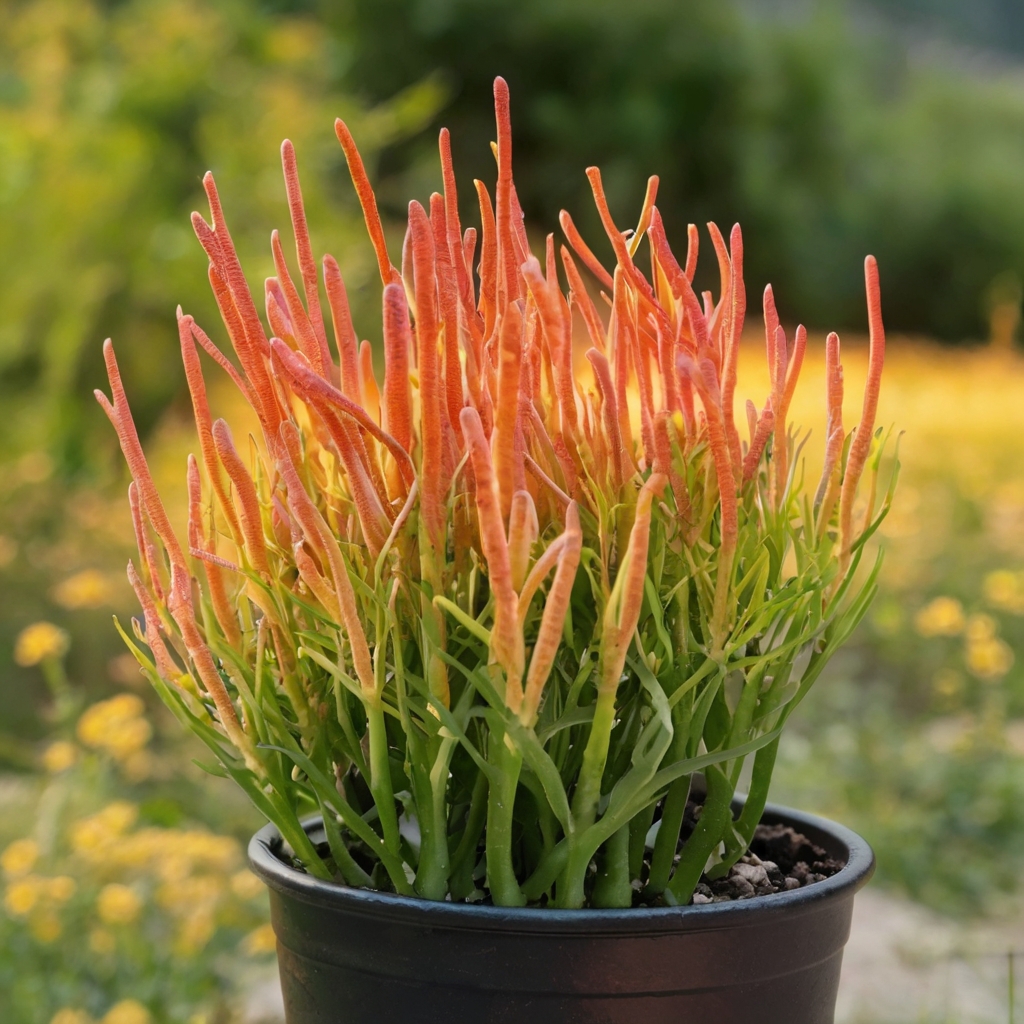
The Firestick Plant, also known as Euphorbia tirucalli or “Sticks on Fire,” is an intriguing succulent that has gained popularity among plant enthusiasts for its striking appearance and minimalistic care requirements. However, to ensure this plant thrives both indoors and outdoors, it’s crucial to understand its specific needs and how to address common issues. This article delves into the essentials of caring for a Firestick Plant, offering practical advice on sunlight, watering, soil, and pest management.
Understanding the Firestick Plant
The Firestick Plant is a succulent belonging to the Euphorbiaceae family. Originating from Africa, it’s known for its pencil-like branches that can turn a fiery red, especially in cooler temperatures. This plant is resilient and adaptable, making it suitable for both indoor and outdoor environments, provided its care requirements are met.
Sunlight Requirements: Striking the Balance
Indoors:
When growing a Firestick Plant indoors, light is a critical factor. These succulents thrive in bright, indirect sunlight. A south-facing window is ideal as it provides ample light without the risk of direct sunburn. However, they can adapt to lower light conditions, although this may affect their vibrant coloration.
Outdoors:
Outdoor Firestick Plants flourish in full sunlight. They can handle the direct sun, which enhances their vibrant red and orange hues. In hot climates, some afternoon shade can prevent scorching. It’s essential to acclimate the plant gradually to full sun if it has been grown indoors, to avoid sunburn.
Watering Frequency: Less is More
Indoors:
The Firestick Plant, like most succulents, prefers a “soak and dry” method of watering. This means you should water the plant thoroughly, allowing the water to drain out completely, and then let the soil dry out before the next watering. Overwatering is the most common mistake and can lead to root rot. Depending on indoor humidity and temperature, watering once every two to three weeks is usually sufficient.
Outdoors:
Outdoor plants may require more frequent watering, especially during hot and dry periods. However, the same principle applies: allow the soil to dry out between waterings. In regions with heavy rainfall, ensure the plant is in well-draining soil to prevent waterlogging.
Soil Type: Well-Draining is Key
The Firestick Plant thrives in sandy, well-draining soil. A cactus or succulent potting mix is ideal. If planting outdoors, ensure the soil has good drainage, perhaps by amending with sand or perlite. Poorly draining soil can retain excess moisture, leading to root rot.
Pests and Diseases: Prevention and Management
Potential Pests:
– Aphids: These small, sap-sucking insects can be a nuisance. They often cluster on new growth and can be managed by washing them off with water or using insecticidal soap.
– Mealybugs: These pests appear as small, cottony clusters. Treating with rubbing alcohol on a cotton swab can help eliminate them.
Diseases:
– Root Rot: Caused by overwatering, this is the most common issue. Ensure proper watering practices and well-draining soil to prevent this condition.
– Powdery Mildew: This fungal disease appears as a white, powdery substance on the leaves. Good air circulation and avoiding overhead watering can prevent it. Fungicidal sprays may be necessary in severe cases.
Seasonal Care Adjustments
Winter Care:
Indoors, reduce watering frequency as the plant’s growth slows down. Ensure it still receives adequate light. Outdoors, in frost-prone areas, it’s advisable to move the plant indoors or provide frost protection, as the Firestick Plant is not frost-tolerant.
Summer Care:
In the summer, the plant’s water needs may increase due to higher temperatures and growth rates. Ensure outdoor plants receive enough water without becoming waterlogged. Indoor plants might need to be relocated to avoid intense afternoon sun that could scorch them.
Propagation: Expanding Your Collection
Firestick Plants are relatively easy to propagate, making it simple to expand your collection or share with friends. Propagation is typically done through cuttings. Here’s a step-by-step guide:
1. Select a Healthy Stem: Choose a healthy, mature stem and cut a piece about 6 inches long.
2. Let it Callous: Allow the cutting to dry and callous over for a few days to prevent rot.
3. Plant in Soil: Once calloused, plant the cutting in well-draining soil and water sparingly until roots develop, usually within a few weeks.
Handling with Care: Safety First
One crucial aspect of caring for Firestick Plants is handling them safely. The plant’s sap is toxic and can cause skin irritation or more severe reactions if it comes into contact with eyes or mucous membranes. Always wear gloves when handling or pruning the plant, and wash hands thoroughly afterward. Keep the plant out of reach of children and pets.
Conclusion: Thriving with Firestick Plants
Caring for a Firestick Plant involves understanding its specific needs and adjusting care practices accordingly. By providing the right sunlight, water, and soil, and being vigilant about pests and diseases, you can enjoy the vibrant beauty of this unique succulent. Whether you’re growing it indoors or outdoors, these tips will help ensure your Firestick Plant remains healthy and thriving.
In summary, the Firestick Plant is a resilient and rewarding plant to grow. With proper care and attention, it can add a striking aesthetic to any space, bringing a touch of nature’s brilliance into your home or garden.

1 thought on “8 Essential Care Tips for Thriving Firestick Plant”